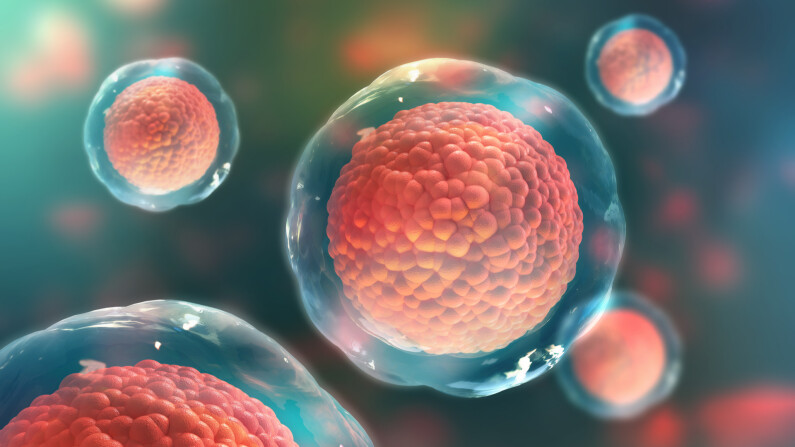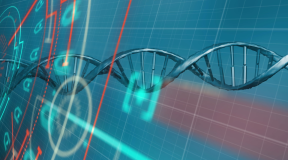The topic of stem cells has become very popular over the past few years. Many people believe that their discovery and use has only taken place recently, maybe in the last 20 or 30 years.
This is due to the development and popularization of modern science and medicine. Nevertheless, the term itself was proposed back in June of 1909 when the Russian-American scientist Alexander Maximow used a similar phrase in one of his reports. He believed that stem cells were nothing more than lymphocytes that behaved in an unusual way during his research.
The scientist discovered that lymphocytes are not erythroblasts, as was commonly believed - that is, they cannot be classified as either white or red blood cells (although they can be called white due to their similarities at the embryonic development stage, especially in chickens). Essentially, stem cells are undifferentiated cells that inhabit our body. Hundreds of types of cells coexist in the human body at the same time, which ensures our vital activities: some support your heartbeat, others purify the blood, while others help to replace cells that have exhausted themselves, and so on. Stem cells are completely unique among all of this variety of cells because they are the very "suppliers" of the different types of cells. For example, skin stem cells can generate new skin stem cells, which sounds logical... However, they can also create other unique cells which can perform more specific tasks, such as the production of melanin.
At the service of your body
So, in simple terms, stem cells are irreplaceable helpers of our body. When we get injured, our cells die; when a certain "lifespan" of an individual cell passes - it dies. Skin cells die every second from a simple touch to any surface - clothes, a table, the keys of your laptop, or from contact with other people (for example, when you shake hands). Hundreds and hundreds of cells die in a person's body every minute. And this is a completely normal and natural process.
It is at such moments that stem cells are activated and they have only one task, but it is extremely important - to restore the body to its previous state. Of course, this is not always possible because the capabilities of our bodies are not limitless (for now, because who knows what the future is preparing for us). But one way or another, stem cells help the body rehabilitate and continue to function normally. They are, in fact, their own internal squad of doctors who rush to the rescue as soon as any problem is discovered. Thus, stem cells have two main properties that help us live. The first is self-renewal, that is, the restoration and the preservation of previous functions. Second is the ability to give birth to offspring in the form of a wide variety of cells.

Types of stem cells
It is believed that each organ may have its own special stem cells. For example, skin cells have skin stem cells with a unique set of functions, blood cells have blood stem cells with different characteristics and so on. Nevertheless, the classification of stem cells is carried out according to generally accepted categories.
- Embryonic stem cells are an internal set of cells during the embryonic development stage. Each person has his own unique set of these cells. The difference between one of their groups in comparison to another gives rise to situations when one person, even a close relative, cannot become a donor for the other person. Yes, even though they ”just” have different embryoblasts. The therapeutic use and detailed study of this type of cell has been criticized for ethical reasons in many countries around the world since it involves a scientific intervention in the development of the embryo — when it reaches the blastocyst stage (and consists of 50-150 cells) about a week after fertilization.
- Fetal stem cells are isolated from the fetus after an abortion and, of course, the issue of their study and possible use is fraught with ethical issues and problems. Nevertheless, a number of countries are still continuing to research fetal cells — in Great Britain, for example, a team of researchers is working hard to find a way to use them to heal the body after a stroke.
- Postnatal stem cells are cells of a mature, adult organism that have less potency (the ability to produce other cells). Their study does not face such strong ethical push back as the study of the previous two types of cells. All postnatal cells are also further divided into three types:
- hematopoietic stem cells which are capable of creating blood cells;
- multipotent mesenchymal stem cells, or those contained in “dense” tissues such as the brain stem;
- progenitor stem cells, or the so-called "specialized" stem cells. They are more constant and have a characteristic biomarker. For example, these include neural cells which are responsible for the formation of the central and peripheral nervous system.
Stem cells as the future of medicine
The use of stem cells in medicine has opened up new opportunities. The most famous mature stem cell transplant is, of course, a bone marrow transplant. "Native" cells are removed chemically or by radiation so that the new, transplanted cells can begin their own activity.
Today, this method is considered one of the main treatments of leukemia. The first bone marrow transplant was performed in 1975 by John Kersey to treat lymphoma. Thanks to a successful stem cell transplant, Dr. Kersey's 16 year old patient survived and is still alive.
At the moment, the technologies for bone marrow transplantation have been developed quite well, the only problem is finding a suitable donor. Stem cell donation gives doctors the chance to save the lives of thousands of children and adults suffering from cancer, leukemia, lymphoma, or other hereditary diseases. There are about 6-7 million people in developed countries who voluntarily donate their blood or part of their own bone marrow for those who need medical care via a transplant. However, despite the rather serious efforts on the part of ordinary people, deaths from leukemia are still quite common. Unfortunately, the huge amount of material handed over for transplantation does not at all guarantee that there will be a suitable donor among them. The probability that a potential donor will become a real one is no more than 1%. This became a prerequisite for the creation of blood stem cell banks. They contain materials from a huge number of donors from all over the world "on demand". The storage of stem cells is possible thanks to modern cryogenic technologies. They are placed in liquid nitrogen so that the cells remain viable for an almost unlimited time.
In 1969, approximately a year before Kersey, physician Edward Donnall Thomas showed in his research that the intravenous injection of bone marrow cells can repopulate bone marrow and help the production of new blood cells, while significantly reducing the risk of complications when the transplant begins to "work" against their new owner. For his discovery Thomas was awarded the Nobel Prize in 1990, but the risk that a transplant will be rejected by a patient to whom it is transplanted to is still high. All of this is despite the advancement in technology and the development of support drugs.
The presence of such serious problems raises the question, "Is it possible to treat the disease in some other way, while reducing mortality?" Yes, we can. Namely by transplanting your own stem cells, which are obtained in a simpler way: from fat, the blood of patients, as well as the blood left in the umbilical cord, if it was collected and stored after birth. The latter option is considered the best. So it is not surprising that more and more people nowadays want to preserve the umbilical cord after the birth of a child in order to use it in the future, if the need arises. The fact is that in the body of an adult there are very few stem cells, and the older a person becomes, the less they are produced. It is this process, by the way, that is called aging - in fact, over time, the human body loses the ability to repair itself, resist external and internal threats, and also qualitatively support vital functions. And it is precisely in the cut umbilical cord that "clean", new cells are present. They are accepted by the body very easily because they are their own. The cells can quickly recover because they are kept young, despite the fact that their owner may have grown up a long time ago. These cells are now actively being used to treat more than 40 diseases. Preserving them makes real sense given their high level of effectiveness, as well as advancements in modern medicine. Perhaps an even better solution could be the use of embryonic cells but, as we already know, working with them is fraught with serious ethical dilemmas and objections.
What is the problem and why are stem cells from umbilical cord blood not being used everywhere? Why is the inferior method of bone marrow transplantation still being used? It is simply because the skills needed for transplantation have yet to be honed to perfection. And since this method was discovered relatively recently, most people with this disease have simply not preserved their stem cells. Of course you can't forget about the possible complications which can, in some cases, pose a greater risk than treatment with other methods.

The advantages and disadvantages of this therapy directly depend on the type of stem cells. Thus, treatment with embryonic stem cells under ideal conditions offers truly limitless possibilities. They are pluripotent cells capable of unlimited division. Since they are at the earliest stage of development, they can turn into anything under the right conditions. This, in theory, should allow doctors to “grow” any organs or tissues needed. There are no pluripotent stem cells in the body of an adult. In practice, in addition to ethical issues, working with embryonic cells is associated with the emergence of a large number of genetic errors in the organs that are grown, as well as the development of malignant tumors instead of healthy tissue. Such studies are still at the very beginning stages.
Fetal stem cell therapy is a little more predictable because it can only develop into a specific type of tissue or organ. These cells are believed to be best suited for treating neurological diseases. Testing for such therapies is already underway. The disadvantages can again be attributed to ethical issues (you will recall that fetal stem cells are taken from an embryo from an abortion), as well as the fact that they do not live long outside the mother's body so doctors usually have only 1– 2 days.
Finally, if we talk about treatment using mature stem cells, then this method is now the most widespread and is no longer new. Postnatal cells are used both for bone marrow transplantation, which we have already mentioned, and for treating burns and bone fractures (in the first case, the damaged areas of the skin are restored, and in the second - bone and cartilage tissue are grown). The disadvantages include the already mentioned limitation that the number of available stem cells decreases significantly with age. Of course, now they can "grow" the required amount in a special environment, but the process can take several months that patients often may not have.
Of the mature stem cells, neural ones are of particular interest. It is assumed that the formation of nerve cells in the brain can be boosted, thereby restoring the loss of mental abilities from disease or old age. Stem cells divide symmetrically and asymmetrically. A prevailing asymmetric division would allow the brain not only to maintain, but also to increase their numbers. The type of division that is predominant in neural stem cells has not yet been proven. This gives hope for artificial stimulation of "neurogenesis" and the restoration of the nervous system.
The greatest achievement of genetics so far is the reprogramming of human somatic cells. The result has been the creation of induced pluripotent stem cells. Regenerative medicine has high hopes on these stem cells. For example, in dentistry it will be possible to regenerate teeth naturally.
***
Scientists believe that if there were more stem cells for treatment and research, especially those collected from the umbilical cord blood, this could solve many problems and significantly extend human life. The list of diseases that have already been successfully treated with stem cells is encouraging. Among these are acute and chronic leukemias, essential thrombocythemia, mucopolysaccharidosis, Chediak-Higashi syndrome, Hurler syndrome, Gunther disease, Wolman disease, and many others.
The list can indeed go on for a long time, and this is good news. Medicine is gradually reaching a level where, as it develops, it is more and more capable of treating serious diseases that were previously fatal. Many patients with serious spinal cord injuries have successfully recovered with the use of cord blood that is rich in stem cells. But the scope of their use, of course, is not limited to only this: scientists are actively conducting research for the treatment of myocardial infarction, stroke, cirrhosis of the liver, heart failure, and other diseases that are ubiquitous and are the most common diseases in humans.
We hope that in the near future the full and effective use of transplanted stem cells will lead to an increase in the life expectancy of patients. This is what doctors have high hopes for, at least.
Share this with your friends!





Be the first to comment
Please log in to comment